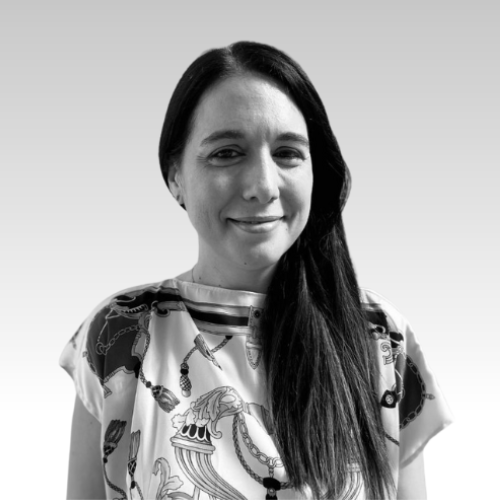

Francesca Drago, from the Scuola Centrale di Formazione, a vocational training centre
Francesca Drago is a virtual exchange enthusiast living in Catania, Sicily. She works at the Scuola Centrale di Formazione which is a vocational training centre. Students coming here focus on training in fields such as hospitality, graphics, wellness, food and catering to name a few.
The role of facilitation within virtual exchange
Francesca learned to be an online dialogue facilitator with Soliya. As a result, she became curious as to how she could integrate this and her VE training to make use of the methodology in her own context.
“It began during the pandemic’, explains Francesca, “when our learners couldn’t travel and felt alone and isolated at home. Using VE became a way for them to be able to connect with others without travelling. It proved to be really successful actually, in terms of them feeling less alone.
“Meeting their peers online enabled them to talk about their feelings at this very difficult time. But not only this. They shared things about their culture, or their music and food. They loved it.
“And you know, the best thing was they also practiced their English. English was the lingua franca and they became more confident and realised that they were perfectly capable of engaging with others in a language that was not their mother tongue.”
Beyond the pandemic
Francesca was so satisfied with these outcomes that she began networking with her colleagues to take it further and carry on beyond the pandemic. Virtual Exchange is now a way of life for them.
“We began using our online sessions as preparation ahead of an actual physical mobility,’ she explains.
“We are using the concept in our blended programmes, and this is proving amazingly successful. The students begin meeting each other online for some facilitated sessions before they go on a physical mobility, so the relationship-building has already begun. Virtual exchange is a great way to lay foundations and begin a cultural exchange.”
Francesca says all the teachers and the students have benefitted a great deal from taking on the challenges of VE.
“Working with teachers from other countries has enabled us to broaden our horizons. We all learn from each other. Both as teachers and the students have improved their digital literacy and we are using different digital tools for different tasks and this has been a fantastic learning curve.”
The impact of VE on students and teachers
Implementing the virtual exchange methodology has clearly led to increased confidence for staff and students alike. As well as improving their digital skills, it’s clear that languages skills and confidence are building too. So how have Francesca and her colleagues gone about funding such collaborations?
“It all begins with the Erasmus+ programme,’ says Francesca. This is where you can find funding for Blended Intensive Programmes and more.”
“I absolutely recommend to others to get involved because the benefits are immense. But it’s also important to understand the methodology of virtual exchange and use your knowledge to adapt it to your context. Virtual exchange is very flexible and transversal so it’s possible to adapt it to formal and non-formal education. This is what we did. You analyse your context and then you can create something to suit your needs. You can easily use it for blended mobility. I’m a firm believer in this type of methodology and would strongly recommend that others investigate it too.”
